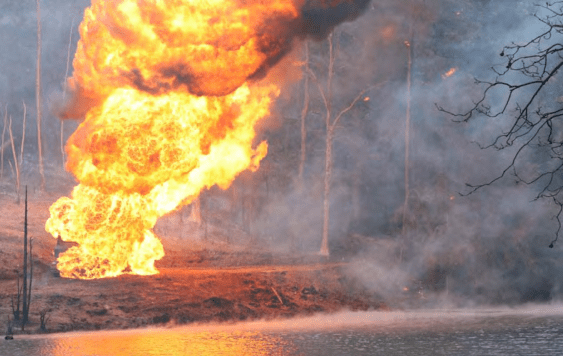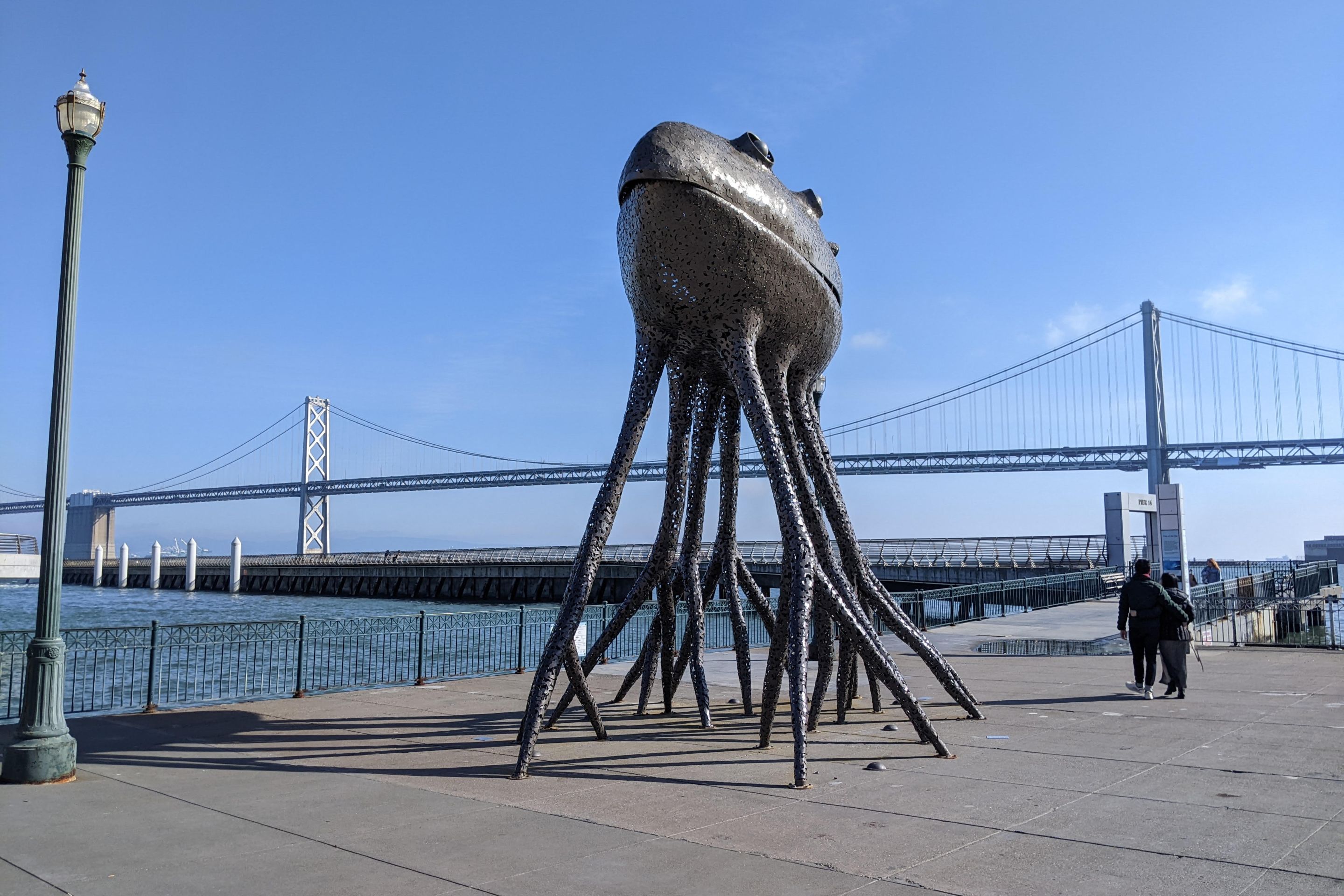Transportation reformers around the country have long been disappointed at politicians’ unwillingness to raise the gas tax to pay for infrastructure. It seems, to many, an obvious and necessary solution for the chronic underfunding of our transportation system. Meanwhile, to the politicians, it is just as obvious that raising consumer taxes during a recession is a bad idea.
The Leadership Initiative on Transportation Solvency, a project of the Carnegie Endowment for International Peace, has come up with a solution.
The three principals of the Initiative – former senator (and presidential candidate and basketball star) Bill Bradley (a Democrat), former governor and DHS secretary Tom Ridge (a Republican), and former comptroller general David Walker (an Independent) – aren’t transportation experts, which Carnegie Endowment President Jessica Matthews says is an asset, since they have “no constituencies to serve.” Indeed, their interest is in creating a paradigm for “the type of fundamental review and reexamination that must be undertaken with every major government program and policy,” according to Walker. All three spoke at an event yesterday to launch the 125-page report, "Road to Recovery: Transforming America's Transportation."
A New Way to Raise Transportation Revenues
In addition to other reforms, the three are advocating a formula for increasing transportation revenues in a way that might be more politically and economically palatable.
First, they say, tax gas when the price is on the way down. That's the way to make it less controversial. They’d like to see a variable gas tax of anywhere between zero and 43 cents per gallon. It would go up or down counter-cyclically based on oil prices, rising when oil prices diminish.
The problem, of course, is that oil prices aren’t expected to diminish. Sure, they were on their way down over the last few months (and then spiked again last week), but over the long term, as scarcity increases, so will prices. The Bradley/Ridge/Walker strategy, then, would leave us with a lower gas tax – and less ability to pay for infrastructure. Right?
Nope. They’ve already thought of that. They’d start by adding a five percent “ad valorem” tax on oil per barrel. This tax would be added upstream, at production or importation, not downstream at the pump. And since it’s a percentage, not a flat amount, revenues will go up with higher gas prices, balancing out the losses in the variable gas tax.
What does all this mean for prices? If crude oil is $100 a barrel, the five percent tax would net $5.00, and gas taxes would be set as they are now – 18 cents a gallon, or 24 cents for diesel (in the report, they round to the nearest cent). That would yield gas prices in the range of $3.70/gallon and yield a total of $63.4 billion a year.
If the price of crude rose $20, the five percent fee would net slightly more – six dollars per barrel instead of five – gas taxes would go down to 12 cents per gallon, and consumers at the pump would pay about $4.13 per gallon. That would bring in revenues of $57.7 billion. (Still better than the roughly $35 billion the Highway Trust Fund is bringing in these days.)
Meanwhile, if the price of crude went down to, say, $70, the ad valorem fee would only net $3.50 a barrel, but per-gallon gas tax would soar to 43 cents, adding up to a $3.16 gas price for consumers and revenues over $100 billion a year.
It’s a more sophisticated pricing instrument than a gas tax hike of a set amount, as is often proposed. This plan would help stabilize price fluctuations to some degree, which makes even auto executives happy, and in even the worst-case scenario nets far more for infrastructure than our current gas tax regime. And even better, it envisions a transition to mileage-based fees in the long term.
"Before We Ask For Another Dollar, Make the Program More Efficient"
The report claims that the costs of building transportation infrastructure just barely exceed the returns on the investment, and that “once the rate of economic return meets the long-term interest rate (cost of capital), it becomes equally beneficial to keep invested capital in the private sector, a clear signal that those investments could be without merit.”
According to the report, the U.S. only recoups two-thirds of its transportation expenses via user fees, far below other developed countries, where transportation revenues end up being a net gain for the economy. (Italy makes back 14 times what it spends in transportation costs through user fees.)
“Most people, when they pull up to the pump, figure ‘well, I just paid x percent for gas, gas tax probably goes up every year, and I’m paying for the roads,’” said Tom Ridge, “when in fact they’re only paying for about two-thirds of the rebar, the concrete, and the asphalt we put down. We’re borrowing the rest. And that’s not a sustainable model if you’re going to bring a 21st century approach where you accept that you have a national security interest in balancing the budget and you have a national security interest in building a strong transportation network.”
That’s where performance measures come in. “Before we ask the American public for one dollar more in infrastructure, we have to make sure the program is right-sized and we’re using every dollar most efficiently,” Walker said.
Fifty years ago, “most of the performance metrics and most of the federal oversight was on process, not on outcomes,” said David Burwell, director of Carnegie’s Energy and Climate Program. “It was about design criteria and requirements for building it right, designing it right, getting it done under budget. It was not about the performance of the system once built. Now that we have a built system we need to focus on performance.”
We’ve covered other recent reports that have called for increased performance measures, but those didn’t have a robust plan for increasing revenue, like this one. In fact, the Bipartisan Policy Center’s study explicitly refused to call for greater revenues, instead choosing to focus on better ways to split up the pie, no matter the size of the pie. Carnegie takes it a step further, acknowledging the hard truth that the transportation sector cannot, in fact, “do more with less,” as House leaders continually exhort them to do. “You can’t build more capacity, and you can’t enhance the existing capacity and improve it, with less money,” Ridge said. “That’s truly the new math, and it won’t work.”
Like many other reform groups (as well as Congressional leaders), the Leadership Initiative calls for the elimination – not just the consolidation – of unneeded programs, which they define as “those that do not directly support national security and prosperity goals.” They also support a permanent ban on earmarks, the creation of a national infrastructure bank, and a move away from formula-based funding allocations – all steps toward a more efficient, more outcome-based transportation system.
They also advocate for a “national register of nationally significant transportation projects.” Bradley says that register could have been used as a shopping list for infrastructure projects for stimulus funding. “Our stimulus was, ‘Well, we need to spend money on infrastructure,’” Bradley said. “The Chinese had a list of nationally significant infrastructure projects for the next five years. And they simply moved year three and two up to year one – so that every dollar that was spent in that stimulus package went to improving the economic competitiveness of that country. That is what we need.”
The Leadership Initiative is relatively agnostic on the question of what a 21st century transportation system – one that reduces oil dependency, cuts carbon emissions, and stabilizes the economy – would look like. The report is decidedly mode-neutral. “The idea was that it would be the best mode for whatever purpose that it was supposed to serve,” said Shin-Pei Tsay, who wrote the report and coordinated the leadership team. “Let other people determine what the split [between funding for highways and other modes] should be, depending on an analysis of what the goals of the program should be.”
As useful as this report is, how much impact can it have, given the timing? The House bill is all but released, the Senate is reportedly just waiting at the gate to release its version – is this suggestion coming too late to have any impact?
“I think the timing is perfect,” said Burwell. “Nothing’s moving – except a straight extension. At least people are thinking about transportation right now.”







